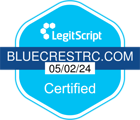In the therapeutic journey, encountering emotional release is not only common but also a vital element of healing. This phenomenon often arises as individuals begin to address deep-seated emotional burdens, allowing them to confront issues that may have been long ignored. Such release can act as a catalyst for uncovering the root causes of maladaptive behaviors. Understanding why this emotional expression is a natural part of treatment can enhance one’s perspective on recovery. What lies beneath these intense moments, and how do they contribute to a transformative healing process?
Understanding Emotional Release
When considering participation in an intensive outpatient program (IOP) for alcohol or drug abuse, understanding the concept of emotional release can be fundamental to the recovery process. Emotional release is the phenomenon where individuals experience a surge of emotions that have been suppressed or ignored, often due to substance use. Coping mechanisms developed during addiction often involve numbing or avoiding emotions. However, in a treatment setting, these mechanisms are gradually replaced with healthier alternatives. Emotional processing becomes a central focus, encouraging individuals to face their emotions directly. This shift can initially be overwhelming but is necessary for genuine recovery. As individuals learn to navigate their emotions, they gain insight into the underlying causes of their substance use. This newfound understanding fosters a deeper connection with themselves and empowers them to develop more effective coping mechanisms.
The Role of Therapy
Therapy plays a crucial role in the recovery journey for individuals participating in alcohol or drug abuse programs. It serves as a foundational component, offering a safe space to explore the underlying causes of addiction and address emotional challenges. Through exploring therapy techniques, like cognitive-behavioral therapy (CBT), dialectical behavior therapy (DBT), and mindfulness practices, individuals are provided with tools to unearth deep-seated emotions and develop healthier coping mechanisms. Furthermore, therapy fosters a supportive environment where sharing experiences leads to personal growth. This communal aspect encourages individuals to connect with others on a similar journey, reinforcing that they are not alone. Ultimately, therapy empowers individuals to face their emotions head-on, facilitating a transformative journey toward recovery.
Benefits of Emotional Expression
Understanding the benefits of emotional expression is an essential step in the therapeutic process for individuals in alcohol or drug abuse programs. Engaging in emotional expression allows participants to confront and process emotions, leading to personal insight and a deeper understanding of their emotional landscape. According to Harvard Health, this process can be both liberating and transformative, providing a foundation for developing healthier coping mechanisms. Furthermore, the act of processing emotions through therapeutic expression fosters resilience, a vital component in the recovery journey. As individuals learn to articulate and manage their emotions, they become better equipped to handle stressors and setbacks without resorting to substance use, helping to fortify their commitment to sobriety.
Overcoming Resistance to Emotional Release
One of the challenges individuals face during recovery is resistance to emotional release. Many people enter treatment carrying years of suppressed emotions, often fearing that confronting these feelings will be too painful or overwhelming. This fear can lead to avoidance behaviors, making it harder to engage fully in the healing process. However, understanding that emotional release is not a sign of weakness but a step toward empowerment can shift this perspective.
Therapists often guide clients through this resistance by fostering a safe and supportive environment. Techniques like guided imagery, deep breathing, and grounding exercises can help individuals feel more prepared to face their emotions. Over time, as trust builds within the therapeutic relationship, clients learn to embrace vulnerability as a strength rather than a liability.
By allowing emotional release to occur naturally, individuals can experience profound breakthroughs in their recovery journey. They often report a sense of lightness or clarity after such moments, which reinforces their commitment to continued healing. It’s important to remember that every emotional expression serves a purpose—it’s a release of what no longer serves you and a step toward rediscovering emotional balance and resilience.
Embracing the Healing Process
Embracing the healing process in alcohol or drug abuse programs requires a willingness to engage with every facet of recovery, acknowledging both the challenges and triumphs. It demands an openness to change and a commitment to self-exploration. These programs, including those offered at luxury rehab centers, provide a structured environment where individuals can explore their past behaviors and develop healthier coping mechanisms. Support from counselors and peers is essential, providing encouragement and accountability. By embracing vulnerability and emotional release, participants can cultivate resilience and gain insight into their emotions, ultimately reclaiming their lives. This journey of self-exploration aids in overcoming addiction and also fosters personal growth, empowering individuals to build a more fulfilling life.

Final Thoughts
Emotional release during treatment is a vital component of the healing journey, offering individuals the opportunity to confront and process suppressed emotions. This cathartic experience is pivotal in uncovering underlying issues and facilitating personal insight. By embracing emotional expression, individuals can identify behavioral patterns and triggers, fostering personal growth and a more authentic self. Supporting this process with empathetic understanding and therapeutic guidance is essential in promoting long-term recovery and the development of healthier coping mechanisms. If you or a loved one is struggling with addiction, remember that you don’t have to navigate this journey alone. At BlueCrest Recovery, we’re here to provide the support and resources needed to help you move from a place of powerlessness to one of strength and healing. Don’t hesitate to reach out to our team online or call us today. Let us walk with you on your journey to recovery. Follow us on Facebook for ongoing insights, encouragement, and support.
Frequently Asked Questions
What Types of Emotional Release Can I Expect During Treatment?
During treatment, individuals may experience various forms of emotional release, such as crying, anger, or relief, as they confront personal challenges. This process is essential for healing, allowing the expression of emotions that have been suppressed. Professional support and therapeutic environments aid in managing these emotions, promoting personal growth and emotional well-being throughout the treatment journey.
How Long Does Emotional Release Typically Last in Recovery Programs?
The duration, impact, frequency, and intensity of emotional release in recovery programs can vary substantially among individuals. Typically, emotional release may begin early in treatment and continue intermittently throughout the recovery process. It is essential for individuals to understand that emotional release is a normal, healthy part of healing and can lead to profound personal growth.
Can Emotional Release Affect My Relationships With Family and Friends?
Emotional release can greatly impact communication and boundaries within familial and social relationships. As individuals navigate their recovery journey, they may experience heightened emotions that can alter existing dynamics within their support system. Support systems play an important role in recovery, allowing loved ones to adjust and offer the necessary support during this transformative time.
Are There Any Side Effects of Experiencing Emotional Release?
Experiencing emotional release can lead to various side effects, including physical symptoms such as fatigue, headaches, or tension. It is essential to develop effective coping strategies to manage these side effects, which may enhance emotional resilience and support overall well-being. Engaging in mindfulness, seeking professional guidance, and maintaining open communication with loved ones are beneficial approaches to foster growth and strengthen personal relationships.
Is It Possible to Have Emotional Release Outside of Therapy Sessions?
Yes, it is possible to experience emotional release outside of therapy sessions. As individuals engage with coping mechanisms and increase their self-awareness, emotions may surface unexpectedly in daily activities. This release is a natural part of the healing process and can occur in various settings, such as during moments of reflection or while engaging in activities that foster emotional expression. Understanding and accepting these experiences can aid in personal growth and emotional resilience.


















